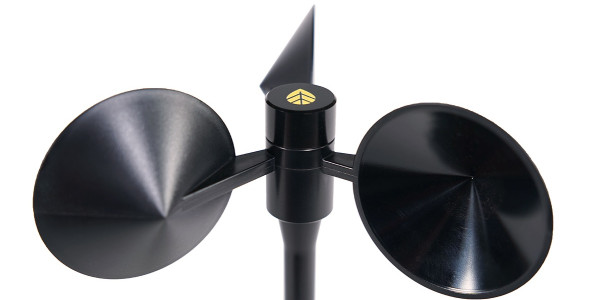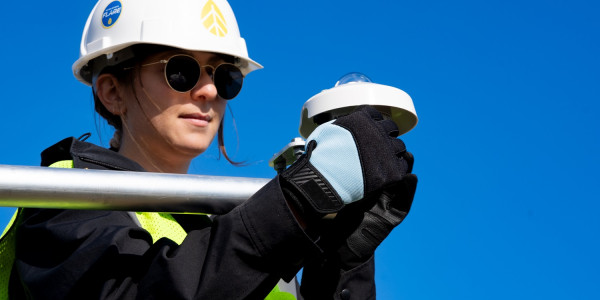February 21, 2020 | Engineering + Technology,
What Anemometer Threshold Is
Anemometer threshold is the minimum wind speed that a cup anemometer will perform within its published specifications. This wind speed is determined by a combination of the area and shape of the sensor cups, which impact the amount of torque applied to the sensor’s rotor. It is also partially determined by the friction in the sensor’s bearing which counteracts this torque.
Why Anemometer Threshold Matters
For applications within the wind energy industry, it is critical to capture wind speed data that fall within the power curve of the various turbine models being considered for the project, so that an accurate estimate of future energy production can be calculated from the wind speed data set. Anemometer threshold is also widely considered in the industry to be a qualitative indication of sensor quality.
Turbine Cut-In
The only minimum anemometer threshold that is quantitatively defensible is the cut-in speed for the development project’s future wind turbines. For example, a Suzlon S111 turbine, which is designed for low wind IEC class III sites, has a cut-in speed of 3.0 m/s. All measurements below this wind speed will be disregarded when calculating the expected annual energy production for a site where Suzlon S111 turbines are expected to be installed. Whether a given anemometer measures within its specifications below 3.0 m/s is technically irrelevant to future energy production estimates.
Anemometer Response Time
Anemometer response time is the time it takes to react 63% to a change in wind speed. Response time is a function of its distance constant and the new instantaneous wind speed and becomes faster at higher wind speeds. Therefore, setting a higher threshold requirement will reduce sensor response times. A table of S1 Anemometer response times at different wind speeds is included to illustrate this dynamic.
|
Wind |
0.7 | 08 | 0.9 | 1.0 | 1.1 | 1.2 | 1.3 | 1.4 | 1.5 | 1.6 | 1.7 | 1.8 | 1.9 | 2.0 | 2.1 | 2.2 | 2.3 | 2.4 | 2.5 |
| NRG S1 Response Time (seconds) |
3.9 | 3.5 | 3.1 | 2.8 | 2.5 | 2.3 | 2.1 | 2.0 | 1.8 | 1.7 | 1.6 | 1.5 | 1.5 | 1.4 | 1.3 | 1.3 | 1.2 | 1.2 | 1.1 |

Threshold Requirements
NRG advises national wind measurement authorities to adopt threshold requirements that are based on real-world economic benefits. All measurements below turbine cut-in speed will be filtered out during data analysis, and anemometer response time decreases when threshold requirements are set closer to turbine cut-in speeds. Setting unreasonably low threshold only increases equipment costs without tangible economic benefits to the measurement campaign, increasing the cost of wind energy and slowing down wind energy development.





